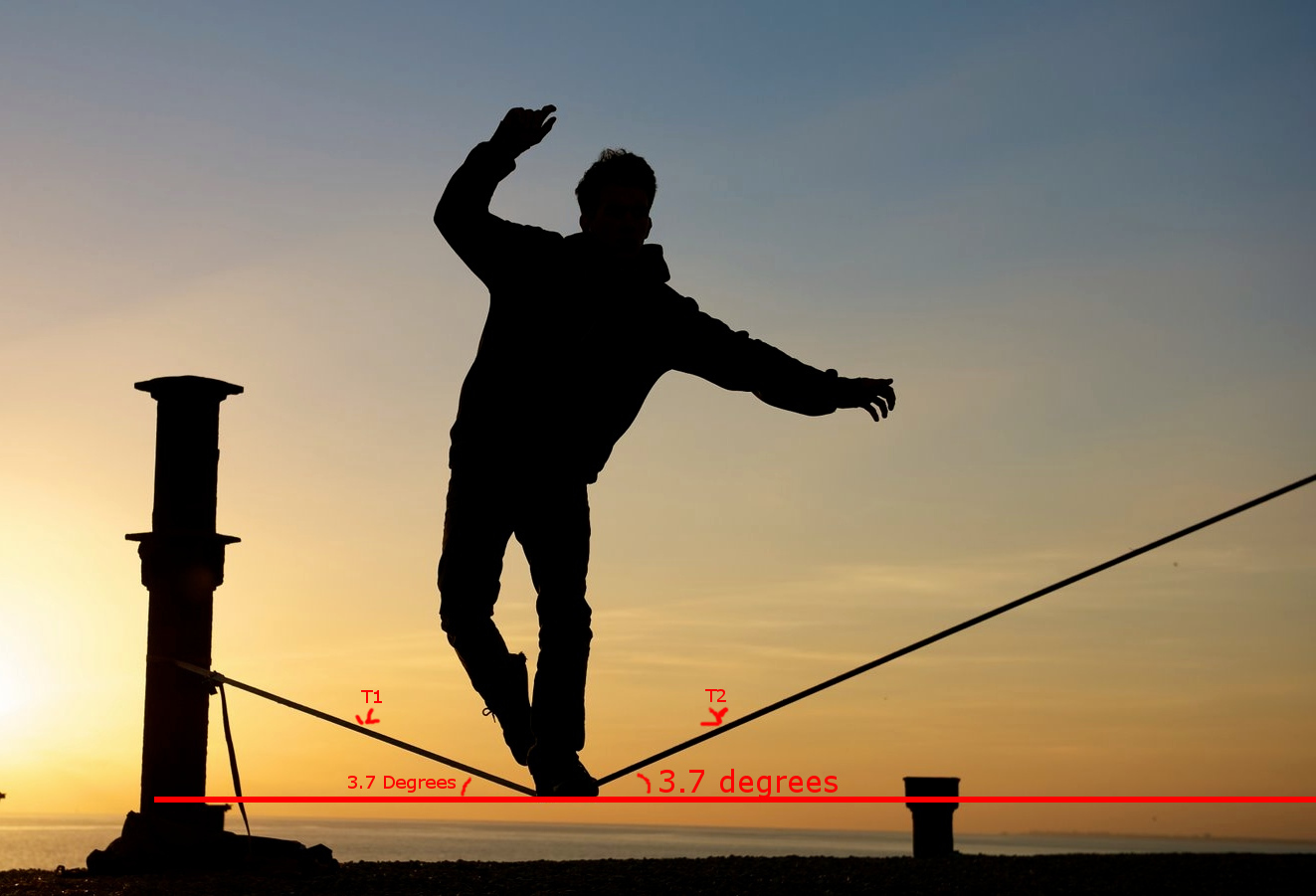A Tightrope Mechanic Problem
A 675 Newton acrobat walks on a tightrope. The man's weight makes the tight-rope sag so that it looks like this:

Each rope's is
What is the tension of the rope on each side of the acrobat?
(The red line is just to show the angles of the rope's slants.)
The answer is 5229.938.
This section requires Javascript.
You are seeing this because something didn't load right. We suggest you, (a) try
refreshing the page, (b) enabling javascript if it is disabled on your browser and,
finally, (c)
loading the
non-javascript version of this page
. We're sorry about the hassle.
Let T 1 = the tension of the first side of the rope, T 2 = the tension of the second side of the rope, and w = the weight.
T 1 x = T 1 ⋅ c o s ( 3 . 7 ∘ ) = 1 . 0 ⋅ T 1
T 1 y = T 1 ⋅ s i n ( 3 . 7 ∘ ) = 0 . 0 6 5 ⋅ T 1
T 2 x = T 2 ⋅ c o s ( 1 7 6 . 3 ∘ ) = − . 9 9 7 9 ⋅ T 2
T 2 y = T 2 ⋅ s i n ( 1 7 6 . 3 ∘ ) = . 0 6 4 5 3 ⋅ T 2
w x = ( 6 7 5 N e w t o n s ) ⋅ c o s ( 2 7 0 ∘ ) = 0
w y = ( 6 7 5 N e w t o n s ) ⋅ s i n ( 2 7 0 ∘ ) = − 6 7 5 Newtons
Now that we have everything split up into x- and y- components, we can some the forces in each dimension and make sure that they equal zero. (Since the acrobat is staying at the same height the whole time and the rope isn't going up or down, that means we have a Translational/Static Velocity. We are using Newton's second law here ( Σ F = m a ) and so know we need to make sure that the sum of the forces in each dimension = 0
In the x- dimension we have:
1 . 0 ⋅ T + 1 + − . 9 9 7 9 ⋅ T 2 + 0 = 0
Although we can't solve anything here, we can rearrange the equation:
T 1 = 1 . 0 ⋅ T 2
Now we can go to the y- dimension:
. 0 6 5 ⋅ T 1 + . 0 6 4 5 3 ⋅ T 2 + − 6 7 5 Newtons = 0
Since this equation had two unknowns in it, we can use the equation from the y- dimension to replace T 2 with 1 . 0 ⋅ T 1 :
. 0 6 5 ⋅ T 1 + . 0 6 4 5 3 ⋅ ( 1 . 0 ⋅ T 1 ) + − 6 7 5 Newtons = 0
T 1 = . 1 3 0 6 7 5 N e w t o n s = 5 . 1 9 × 1 0 3 or 5190